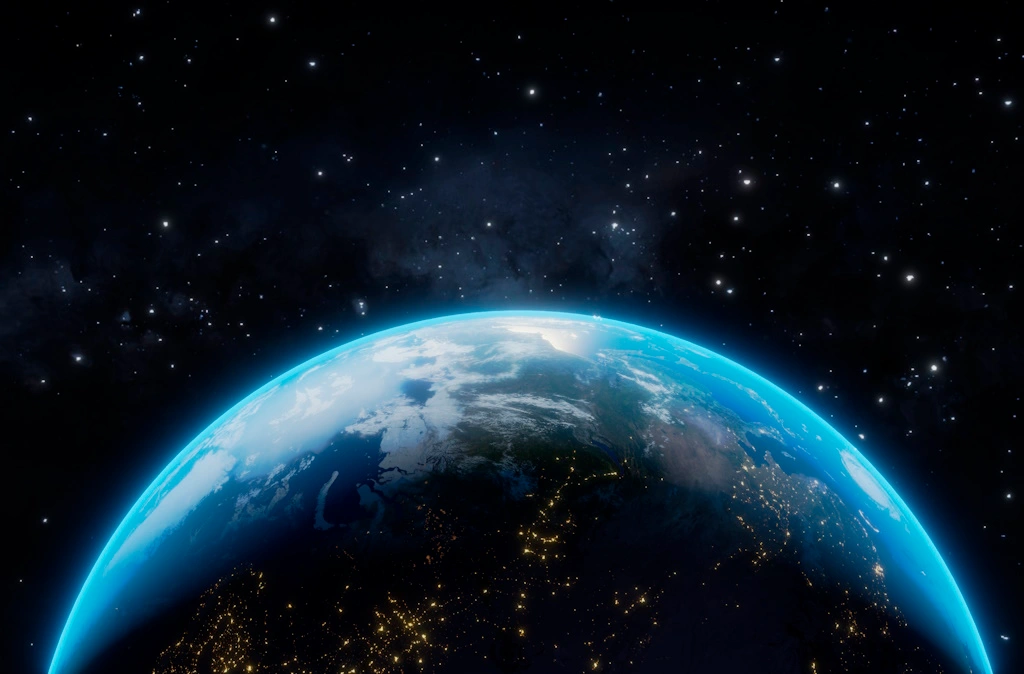Exploring the Mysteries of Oceanic Crust: The Hidden Foundation Beneath Earth’s Oceans
April 5, 2024
Science
Beneath the vast expanse of Earth’s oceans lies a world shrouded in mystery and wonder – the oceanic crust. This enigmatic realm forms the foundation of our planet’s ocean basins, playing a crucial role in shaping the geology and dynamics of the Earth’s surface. In this blog, we embark on a deep dive into the depths of the oceanic crust to uncover its secrets and significance.
What is Oceanic Crust?
Oceanic crust is the thin layer of Earth’s crust that underlies the ocean basins. It is primarily composed of basalt, a type of volcanic rock that forms from the solidification of magma erupted at mid-ocean ridges. Unlike continental crust, which is thicker and less dense, oceanic crust is relatively thin and denser, averaging around 6 to 7 kilometers in thickness.
Formation and Evolution:
The formation of oceanic crust begins at mid-ocean ridges, where tectonic plates diverge and magma from the mantle wells up to the surface. As this magma cools and solidifies, it forms new oceanic crust, creating a continuous process of crustal generation and spreading. Over time, older oceanic crust moves away from the mid-ocean ridges, cools, and becomes denser, eventually sinking back into the mantle at subduction zones.
Structure and Composition:
Oceanic crust is stratified into distinct layers, each with its own unique composition and properties. At the topmost layer is a layer of sediment, consisting of loose particles of rock, organic matter, and marine life. Beneath the sediment layer lies a layer of basaltic rock, formed from the solidification of magma. Deeper still is the gabbroic layer, which consists of coarser-grained igneous rock formed from the slow cooling of magma beneath the surface.
Role in Plate Tectonics:
The oceanic crust plays a central role in the theory of plate tectonics, which describes how the Earth’s lithosphere is divided into a series of rigid plates that move and interact with one another. Oceanic crust is continuously created at mid-ocean ridges and destroyed at subduction zones, driving the process of seafloor spreading and subduction. This dynamic cycle of crustal formation and destruction is responsible for shaping the Earth’s surface features and driving geological processes such as earthquakes and volcanic activity.
Scientific Exploration:
Despite its importance, much of the oceanic crust remains unexplored and poorly understood. Scientific expeditions and research initiatives, such as deep-sea drilling projects and underwater mapping efforts, have shed light on the structure, composition, and evolution of oceanic crust. These studies have revealed fascinating insights into the Earth’s geological history and the processes that govern the dynamics of our planet.
One of the most groundbreaking scientific endeavors aimed at studying oceanic crust is the International Ocean Discovery Program (IODP). This international collaboration brings together scientists from around the world to conduct drilling expeditions in various ocean basins, with the goal of uncovering clues about Earth’s history and processes. Through the analysis of sediment cores, rock samples, and geophysical data collected during these expeditions, researchers gain valuable insights into the formation of oceanic crust, past climatic conditions, and the biodiversity of deep-sea environments.

Conclusion:
Oceanic crust may lie hidden beneath the depths of Earth’s oceans, but its influence extends far beyond the confines of the underwater realm. From driving the movement of tectonic plates to shaping the landscape of the seafloor, oceanic crust plays a vital role in shaping the geology and dynamics of our planet. As our understanding of this enigmatic realm continues to deepen, so too will our appreciation for the intricate interconnectedness of the Earth’s systems. Through ongoing scientific exploration and discovery, we can unlock the secrets of oceanic crust and gain a deeper understanding of the processes that shape our planet’s past, present, and future.
Note : The provided information may contain errors; please contact us if you notice any.
Image source: Freepik , Freepik
Science

















Excellent post! Valuable information presented clearly. Keep it up, looking forward to more insightful content in the future!
I’m glad to hear that you find it helpful for expanding your knowledge! It’s always great to hear from someone who appreciates learning. Is there anything specific you’re interested in exploring further?